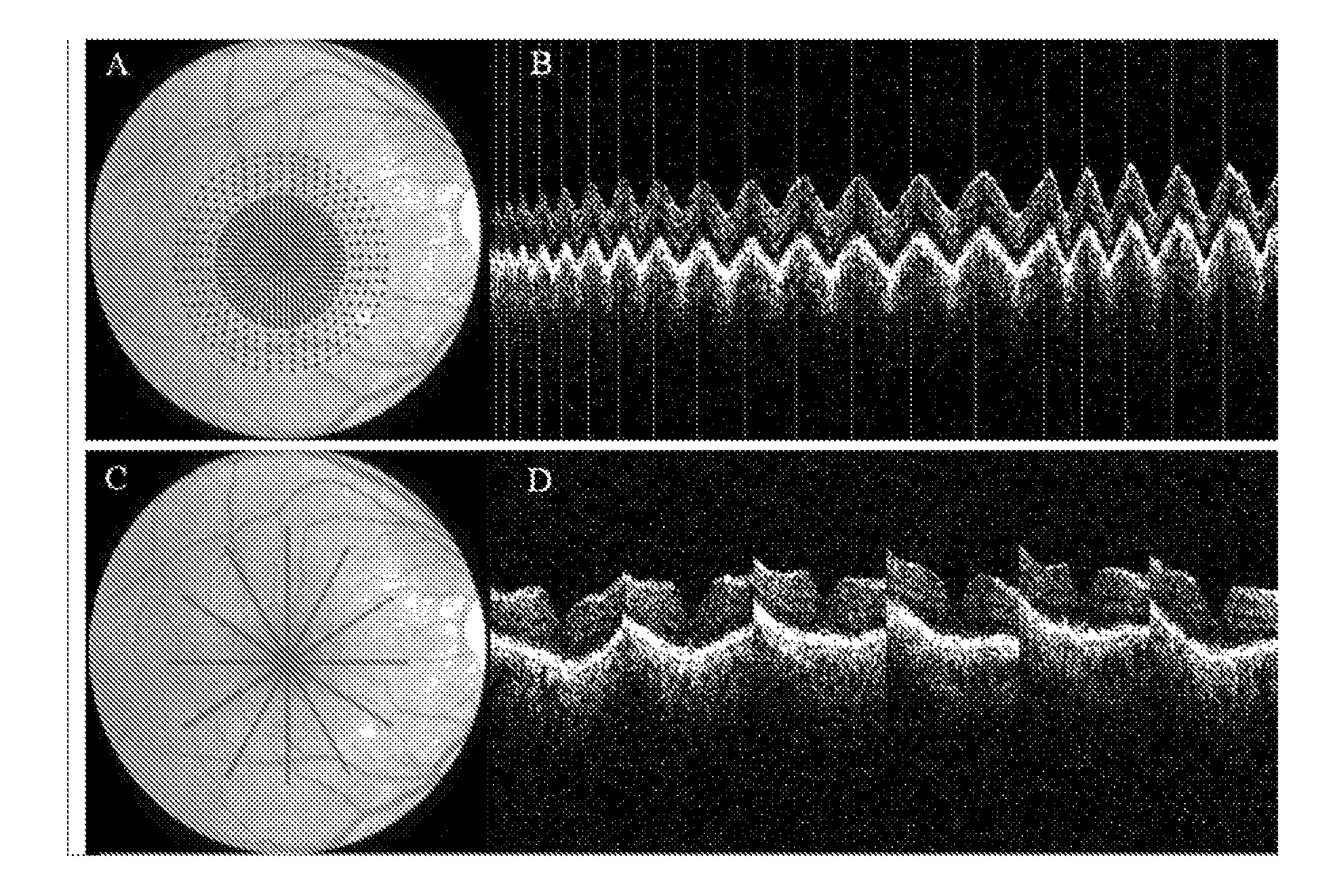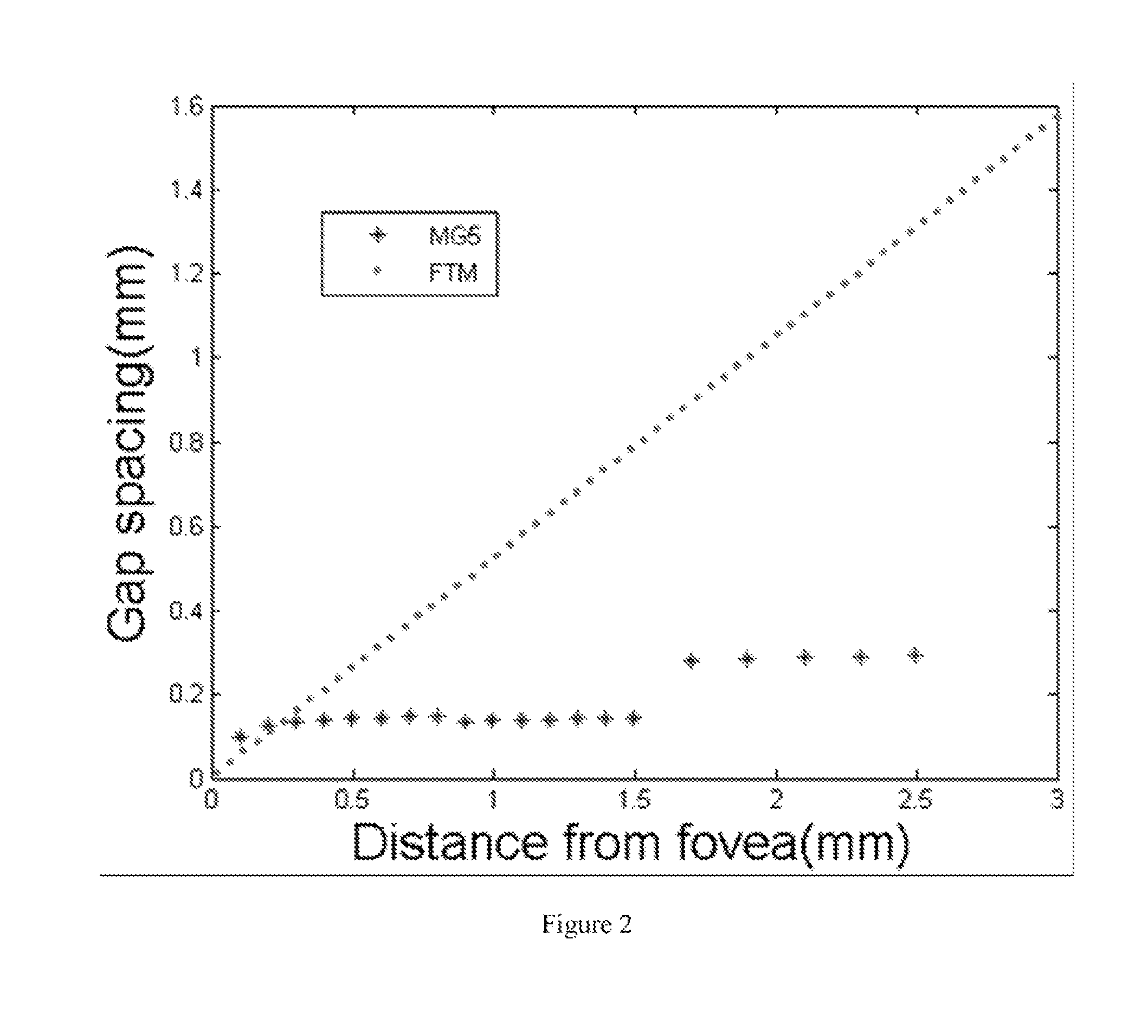Mapping and diagnosis of macular edema by optical coherence tomography
a technology of optical coherence tomography and macular edema, applied in the field of ophthalmology, can solve the problems of visual loss, complicating the accurate and reproducible detection of macular edema areas, and affecting the accuracy of the diagnosis
- Summary
- Abstract
- Description
- Claims
- Application Information
AI Technical Summary
Benefits of technology
Problems solved by technology
Method used
Image
Examples
examples
Materials and Methods
1. Data Collection and Study Population
[0045]We retrospectively reviewed the clinical and imaging records of 71 eyes of 40 patients referred to the Doheny Ocular Imaging Unit with a diagnosis of diabetic macular edema (DME) who underwent OCT imaging using both the MG5 scan pattern (FIG. 1) and Fast Macular Thickness Map (FMTM). Approval for the analysis of these records was obtained from the institutional review board of the University of Southern California. For all OCT imaging studies, the Stratus OCT system with version 4.0 software was used to acquire the scan of the macula. Fast Macular Thickness Map and MG5 data from 65 normal subjects recruited from the Doheny Eye Institute and the University of Pittsburgh Medical Center were used as the reference baseline. The normal subjects were recruited as part of the prospective Advanced Imaging for Glaucoma Study. The study was approved by the institutional review boards of the University of Southern California and...
PUM
 Login to View More
Login to View More Abstract
Description
Claims
Application Information
 Login to View More
Login to View More - R&D
- Intellectual Property
- Life Sciences
- Materials
- Tech Scout
- Unparalleled Data Quality
- Higher Quality Content
- 60% Fewer Hallucinations
Browse by: Latest US Patents, China's latest patents, Technical Efficacy Thesaurus, Application Domain, Technology Topic, Popular Technical Reports.
© 2025 PatSnap. All rights reserved.Legal|Privacy policy|Modern Slavery Act Transparency Statement|Sitemap|About US| Contact US: help@patsnap.com



